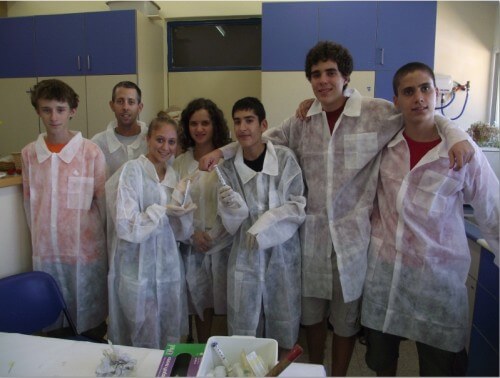The launch is expected tonight (Monday) at 02:35 Israel time, the tests are expected to be conducted in January.

Space X plans to launch the first of 12 operational missions for NASA, in which it will carry over 300 kg of supplies to the International Space Station in the expected launch tonight (8/10/2012) at 02:35 Israel time. The launch will take place from Launch Complex 40 at the Cape Canaveral Air Force Station in Florida. The unmanned spacecraft will arrive at the space station about three days later.
The supply spacecraft will also launch experiments carried out by station staff members, including three Israeli experiments. Dr. Raz Yitzhaki Tamir, CEO of NSL Satellites, says that among the experiments that will be launched in the private spacecraft are also three experiments by high school students from two schools in Israel.
"During the last school year, students in three schools went through a unique course on the space environment, life on the space station as well as the legacy of the first Israeli astronaut - the late Col. Ilan Ramon. The three experiments were selected from a group of proposals by a committee made up of space experts, teachers, students and their families.
NSL Satellites consists of space experts and engages in engineering and educational projects. The experiment is part of the PBL - Project Based Learning approach that allows students to solve problems while performing multidisciplinary learning.
According to Dr. Itzhaki Tamir, the benefit of the experiment beyond its scientific contribution is the imparting of learning and research skills in an environment where the answers are not known in advance, like in real life. "We want the students to look at this experience as the greatest experience they remember from the school year, and for some of them it will be a changing and life-shaping experience."
Seed germination experiment in space - Atidim High School - Holon
The experiment is carried out by students of grades XNUMX-XNUMX at Atidim middle school. The experiment is the germination of radish seeds under microgravity conditions. The experiment consists of seeds placed on a paper substrate, and a test tube filled with water. The seeds and test tube are ready for a silicone test tube. The experiment begins when the astronaut breaks the test tube full of water - similar to a stick-light and the substrate absorbs the water and allows the seeds to start the process.
The chosen experiment is of great importance for manned flights into space because it is a step in the creation of vegetation that enables the production of oxygen during long journeys into space. Also, the experiment allows us a rare glimpse into the vast wisdom inherent in the world of plants.
As mentioned, the experiment is divided into two. One part will be performed on the space station, and will be operated by astronauts according to instructions that will be transmitted from the group. The second part will be carried out on the ground and will allow us to compare the results of the space experiment with ground experiments and thus isolate the effect of reduced gravity on the experiment.
Epoxy glue preparation experiment - Meshgav
The results of the experiment will allow future repairs to be made to the space station and manned spacecraft if these are damaged by micro particles while moving in space.
VP of Engineering at NSL - Mr. Daniel Rockberger says "the results of the experiment may improve the physical properties of composite materials, which has many uses in many fields such as aviation, civil engineering and, of course, space."
גProducing cancer cells in space - Or School - Mate Yehuda
The experiment was chosen by the students of the Or school in the settlement of Zur Hadassah in Mate Yehuda. The experiment focuses on the ability of cancer cells to develop in microgravity conditions compared to their development on Earth.
The chosen experiment is of great importance to a person. The increase in life expectancy increases our exposure to cancer. The success of treating the disease directly depends on how well we know its ability to develop under different conditions.
If we find out that the development of cancer cells in microgravity conditions is different than on Earth, this could give the researchers another research direction in the ongoing fight against the disease.
As part of the work of the team of researchers at Hadassah, it was discovered that in order to perform the experiment, special conditions are needed on the space station. These conditions require the use of an incubator
which will keep the experiment at human body temperature for the entire flight. In order to solve this, it was decided to postpone the launch of the experiment to January 2013. Then it will be possible to use the incubator located in the space station and which will be available only for us.
Dr. Itzhaki Tamir adds: "The launch is carried out with the help of the NanoRacks company, which has an agreement to launch payloads with NASA"

4 תגובות
There are probably many dozens if not hundreds of experiments and not just one more experiment. This is probably my mistake due to different classifications. I'll fix it for three.
There is a small lack of inhibition in the article: the title says "three Israeli experiments", and in the article itself "including four Israeli experiments" and "among the experiments that will be launched in the private spaceship also three experiments by high school students", so it is worth changing the title to four.
Moser, Engineering High School in Herzliya was proud to take part in a similar launch.